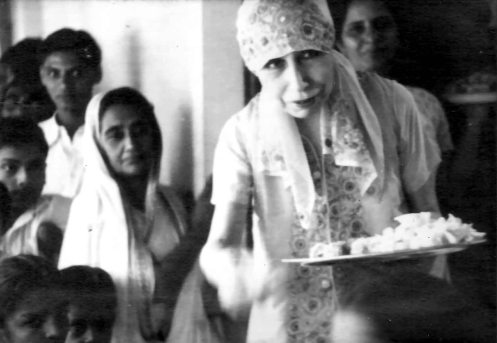One of the very interesting publications I have read on the Mother (whose birth anniversary falls on Feb. 21, today) is by Dr. D. B. Bisht, a former department head of JIPMER and Director General of Health Services.
His ‘Mother and Me’ is a booklet of 48 pages, but brims with rare insights into the personality of the Mother. Dr. Bisht is a doctor and a level-headed man of a scientific disposition. He has even treated the Mother medically. His views are therefore very valuable. He reveals, for example, that he has had a fascination for owls but kept it under wraps because the bird was considered to be unlucky by some. He experienced a great relief when the Mother revealed that she too shared his enthusiasm for owls!
Dr. Bisht found out early, even before he began to treat the Mother, that her heart beat irregularly. When he met Mother the first time and she blessed him, the doctor’s hand involuntarily held her wrist and felt her pulse! That was when he found out her heart condition. The Mother, however, had known that her heart beat irregularly forty years back while climbing a staircase. She had accepted her heart as given by the Divine and had never been the worse for her ‘atrial fibrillation’!
When the doctor had occasion to treat the Mother, he found her openness touching. When he prescribed any medicine, she would never object. The doctor had his own notions, though, while treating the Mother. He always prescribed pediatric doses because his ‘faith’ used to tell him that the Mother, being a ‘realised soul’, would not need the normally prescribed doses. The doctor’s rational mind would however clash with his faith and tell him that the Mother responded to small doses because she was growing old and her physical body was gradually shrinking! But the doctor found her responding rather very fast to his medicines and he took that to be a sign of the ‘fourth dimension’ of the Spiritual. The tussle between the rational mind and faith is surely very interesting.
Being a doctor gives one extraordinary concessions. Once the doctor prescribed anti-biotics for the Mother’s chest infection and holding a glass of water with the medicine, told her, ‘Please, Mother, drink it like a good girl’’! The moment the doctor uttered the words, ‘a good girl’, the Mother burst into hearty laughter. The doctor could feel the entire room vibrating! Everyone was surprised (perhaps even the Mother herself was!) The doctor, who himself was a protagonist of loud laughter – even as I am, though I have reservations against thunderous and deafening hah-hahs) – couldn’t help silently smiling to himself at the Mother’s unexpected reaction.
Sri Aurobindo and the Mother spoke of a divine life in a divine body, but it was the doctor’s job to point out to Mother that her physical body was more than showing signs of aging. ‘‘The only way to delay this degenerative process is to continue to do physical movements since the joints are like flowing water. The water remains pure as long as it flows. The Mother nodded her head and went into a trance and a little later just nodded her head’’.
The Ashram is famous for it blessing packets – a small beautiful packet containing petals of rose – but it was left to the dear doctor to once ask the Mother, ‘‘Mother, do you yourself believe in these blessing packets?’’
How did the Mother respond? ‘‘These blessing packets by themselves do not mean much. Primarily it is you yourself who have to do what you must. Still, if you have faith, these could help you. And I want you to keep this always with you. You may keep this in your purse’’.
 The doctor describes his first darshan of Mother and how he was captivated and fascinated by her ‘‘absolutely clear, deep and beautiful eyes, which had only a feeling of benevolence’’.
The doctor describes his first darshan of Mother and how he was captivated and fascinated by her ‘‘absolutely clear, deep and beautiful eyes, which had only a feeling of benevolence’’.
There is something very frank and straightforward in the impressions recorded in this book that are as fascinating as the subject they deal with.
